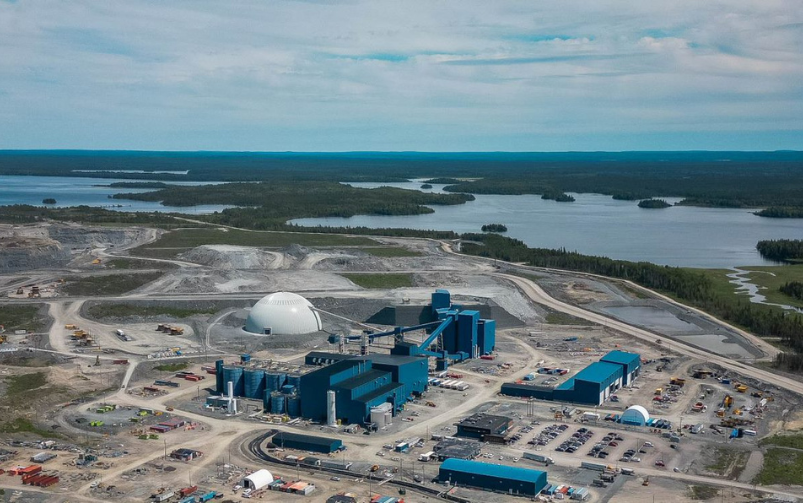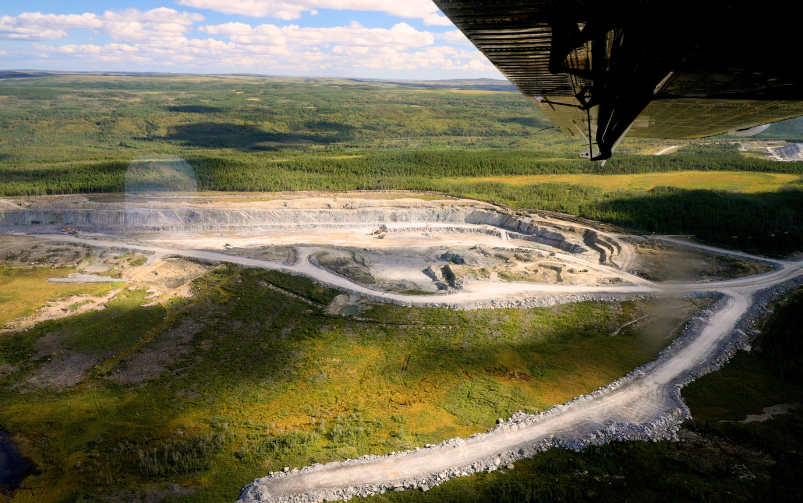Barrick Gold Corporation’s Hemlo operation in Ontario (pictured). Barrick Gold stated in a Nov. 28 press release that it has advocated for a consolidated responsible mining standard for many years. Courtesy of Barrick Gold
Four major mining organizations are working to consolidate their individual voluntary responsible mining codes and standards into a single standard for the industry.
The consolidation effort by ICMM, the Mining Association of Canada (MAC), Copper Mark and the World Gold Council (WGC) came in response to feedback from investors, civil society, policymakers and downstream customers, as well as from members of the industry itself, for one consistent standard.
“Having been involved in the industry and standards development in the past, we’ve seen real organic growth in responsible mining standards initiatives. It’s like a thousand flowers blooming, and in many respects that’s a good and healthy thing until it isn’t,” said Aidan Davy, co-chief operating officer at ICMM, in an interview with CIM Magazine. “Things are too complex and hard to navigate for different stakeholder groups, and that was the thing that motivated us to go down this route.”
The organizations said that the consolidated standard could have the widest coverage of any voluntary responsible mining standard so far, with initial implementation by more than 80 mining companies with roughly 700 operations across almost 60 countries if everyone in their collective memberships participated. Davy said the “bigger prize” is the potential ability to affect change at scale by reaching companies that have not participated in the past.
“If you think about the ability to implement any of these [four standards], they’re hidden behind a paywall of membership today,” he said. “Imagine a future where the standard is housed within an independent entity and membership is no longer a barrier: it opens up an ability for a much wider group of companies to be part of this endeavour.”
Pierre Gratton, MAC’s president and chief executive officer, told CIM Magazine that ICMM initially approached the other partners in early 2023, and the four organizations put together an initial draft for a unified standard last year. That was sent out to two advisory groups of industry members and stakeholders for their thoughts, which generated “lots of comments,” he said.
“This is not a small undertaking, and it’s going to take some time,” he said. “I think the potential of a unified, broad-based standard with the backing of so many companies is very attractive for many, not just for the industry itself, but it’s going to be a lot of work. It’s not just what it looks like [in the end] but how we get there, and that there are lots of opportunities for stakeholders to be involved in its development.”
Davy said the associations expect to release a draft, with feedback incorporated from the advisory groups, for public consultation sometime in 2024.
Combining four different standards
The organizations said they are using the best components from each individual standard—ICMM’s mining principles, MAC’s Towards Sustainable Mining (TSM) performance system, Copper Mark’s assurance framework and the WGC’s responsible gold mining principles—as the foundation for the new standard.
ICMM’s mining principles set out environmental, social and governance (ESG) requirements for its members through 39 performance expectations on ethical business practices, health and safety, risk management and more, as well as nine position statements from the council on industry challenges, including mineral revenue transparency, climate change, water stewardship and tailings governance.
MAC’s TSM program evaluates companies’ social and environmental performance at a mine site level against 30 performance indicators, including for Indigenous and community relationships, preventing child and forced labour, managing biodiversity and conservation, and crisis management. Every three years companies must have their results validated by an independent auditor recognized by MAC, as well as give communities near their mine one month’s notice so that they can participate in the audit if they want to. Companies must also disclose their performance. Eleven mining associations around the world have adopted the TSM program since it launched in 2004.
Copper Mark is a set of standards for responsibly mining copper, nickel and zinc, covering stakeholder engagement, responsible supply chains, collective bargaining, health and safety, climate action and greenhouse gas reduction, human rights and more. Participating companies conduct site-level evaluations and then must have them independently verified. More than 20 per cent of global copper is currently produced by Copper Mark-assured operations.
WGC’s responsible gold mining principles cover ESG criteria for gold mining operations, including ethical conduct, labour rights and land use and mine closure, which participating companies must report publicly on and obtain independent assurance of their conformance.
The best of both worlds
Davy said all four partners are committed to a multi-stakeholder governance system for the standard, like TSM and Copper Mark currently have. In terms of the standard itself, he noted that both ICMM and WGC are principles-based standards covering a broader array of criteria, while TSM and Copper Mark have fewer performance areas but are much more prescriptive in their approach. He said he believes the consolidated standard will combine both approaches to ultimately be more prescriptive, while covering a broader scope of issues.
He also expects the standard will have an assurance process that involves independent third-party organizations, in line with TSM, Copper Mark and the WGC’s principles, rather than the self-assessments ICMM’s principles allow for.
One question still to be answered is how to ensure the assurance process is “sufficiently robust” without being cost-prohibitive for smaller companies to participate, Davy said.
Davy declined to name participants on either the multi-stakeholder or industry advisory groups until the standard is available for public consultation, but said that the multi-stakeholder group is comprised of representatives from the investment community, buyers of mined products, civil society and international organizations. The industry advisory group has representation from various geographies, commodities and companies that have participated in each of the four standards.
Barrick Gold Corporation announced in a Nov. 28, 2023, press release that it was “actively involved” in the development of the standard, with a seat on the industry advisory board, as well as being a member of three of the organizations.
Mark Bristow, Barrick’s president and chief executive officer, stated in the release that the company supports the initiative and has long been an advocate for standards consolidation.
“Having one standard for responsible mining will not only provide clear direction on what good should look like but would reduce the complexity that exists with the numerous standards currently in circulation,” Bristow said.




